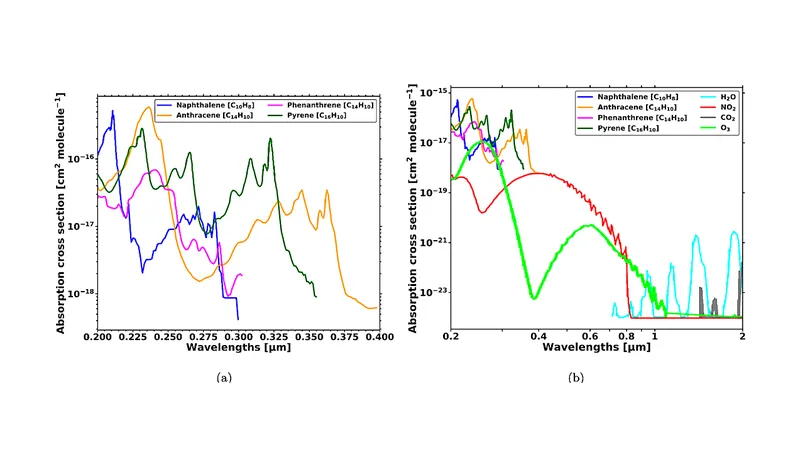
The Cosmic Clue: Could Polycyclic Aromatic Hydrocarbons Signal Intelligent Life Beyond Earth?
2025-01-14
Author: Charlotte
Exploring the Universe and PAHs
Exploring the universe has always piqued human curiosity, and recent studies highlight Polycyclic Aromatic Hydrocarbons (PAHs) as compelling candidates for extraterrestrial technosignatures. These complex organic compounds, abundant throughout the cosmos and interstellar medium, are often linked with human activities on Earth, such as fossil fuel combustion and wood burning. But could they instead be hints of advanced alien civilizations?
Researching PAH Detection on Exoplanets
In a groundbreaking approach, scientists are investigating how these PAHs could be detected on Earth-like exoplanets orbiting sun-like stars within a 10 parsec radius. Specifically, research has focused on key PAH molecules including Naphthalene, Anthracene, Phenanthrene, and Pyrene. Utilizing simulations based on the capabilities of the upcoming Habitable Worlds Observatory (HWO) with its powerful 8-meter mirror, researchers have discovered that detecting PAH signatures in the wavelength range of 0.2-0.515 micrometers remains, at present, an insurmountable challenge.
Challenges in PAH Detection
Considering the historical decline in PAH production after the industrial revolution, the study also examined various concentrations of these compounds to evaluate the observational tools necessary to spot civilizations akin to our own. Furthermore, the research looked at different telescope sizes (ranging from 6m to 10m mirrors) in relation to HWO's future mission, though preliminary findings suggest that even higher concentrations of PAHs—up to ten times existing levels—may still evade detection.
Potential Detection Improvements
While larger mirrors show some promise for monitoring, they are still insufficient for discerning the clear spectral signatures of these PAHs due to a poor signal-to-noise ratio. Yet, the ultraviolet (UV) absorption characteristics of these compounds, stemming from specific electronic transitions, offer tantalizing potential in identifying unique markers indicative of biological processes.
Future Directions
To enhance detection capabilities, extensive laboratory measurements are required to gather more comprehensive absorption cross-section data across a wider spectrum for more prevalent PAHs. Such advancements could significantly aid in confirming the existence of organic markers that hint at life beyond Earth.
The Implications of Finding PAHs
As humanity delves deeper into the cosmos, the implications of finding PAHs in alien atmospheres could utterly transform our understanding of life and intelligence in the universe. Stay tuned as we uncover more about the chemical fingerprints that might one day lead us to our cosmic neighbors!









 Brasil (PT)
Brasil (PT)
 Canada (EN)
Canada (EN)
 Chile (ES)
Chile (ES)
 Česko (CS)
Česko (CS)
 대한민국 (KO)
대한민국 (KO)
 España (ES)
España (ES)
 France (FR)
France (FR)
 Hong Kong (EN)
Hong Kong (EN)
 Italia (IT)
Italia (IT)
 日本 (JA)
日本 (JA)
 Magyarország (HU)
Magyarország (HU)
 Norge (NO)
Norge (NO)
 Polska (PL)
Polska (PL)
 Schweiz (DE)
Schweiz (DE)
 Singapore (EN)
Singapore (EN)
 Sverige (SV)
Sverige (SV)
 Suomi (FI)
Suomi (FI)
 Türkiye (TR)
Türkiye (TR)
 الإمارات العربية المتحدة (AR)
الإمارات العربية المتحدة (AR)